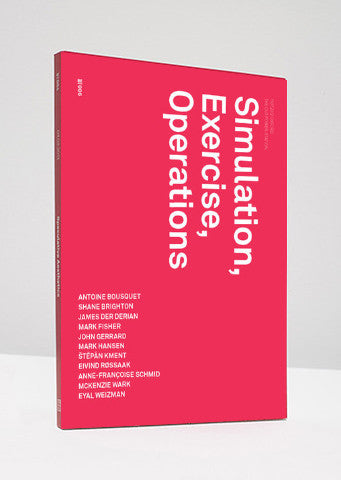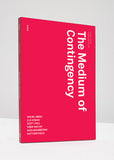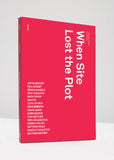Simulation, Exercise, Operations
Simulation, Exercise, Operations
Robin Mackay (Ed.)
Published by Urbanomic
April 2015
Paperback 148x210mm, 150 pp.
ISBN 978-0-9930458-6-8
Documenting and expanding a ROUND TABLE DISCUSSION hosted by Urbanomic in 2012, and published to coincide with the exhibition Exerciseat KUNSTHALLE DARMSTADT (April 26 to October 11, 2015), this volume uses the work of artist John Gerrard as the locus for a set of wide-ranging interventions and discussions on the status of the moving image in an age of advanced simulation.
In Simulations (1983), Jean Baudrillard proposed that we had entered into a 'third era of the simulacrum': No longer the Renaissance paradigm in which the simulacrum was understood as a counterfeit version of the real; nor the Industrial paradigm, whose endless series of simulacra threatened the original with redundancy; but the age of the model or simulation, as a simulacra that precedes the real, and ultimately renders the distinction between real and simulation untenable. This era heralds 'the generation by models of a real without origin or reality ... henceforth, it is the map that engenders the territory ... no longer measured against some ideal or negative instance ... it is nothing more than operational.'
The most acute examples of such developments are found in the military sphere, where technological simulation has become an integral part of training and operations; and where, at the same time, media spectacle - often enabled by the same technologies - has become integrated with military power. Trained in virtual environments, military personnel are increasingly enhanced by augmented reality technologies that bring combat into conformity with its simulation. And the seductions of media and entertainment have become such crucial weapons that a country's skill in self-representation and 'information dominance' can determine its status as a global power. At the same time as the infosphere demands that war takes on 'the properties of a game, with high production values, mythic narratives, easy victories and few bodies.' [James Der Derian], hyper-realistic videogames evolved from military technology become a kind of virtual distributed training camp (as evidenced in Anders Breivik's chilling testimony), military intelligence is 'crowdsourced' from social media, and the lines between simulation and action, combatant and civilian, become blurred.
The volume also includes five artcards of the works included in the Darmstadt exhibition.
Publication supported by Kunsthalle Darmstadt, Borusan Contemporary, and Thomas Dane Gallery.
Contents
LEÓN KREMPEL - Preface
Introduction
ANTOINE BOUSQUET - Wargames
JAMES DER DERIAN - Virtuous War
ŠTĚPÁN KMENT - Programming Worlds
MCKENZIE WARK - Players
EYAL WEIZMAN - Forensic Temporality
SHANE BRIGHTON - Tragic Witnessing
MARK FISHER - The Labour of Simulation
EIVIND RØSSAAK - More than an Image
MARK HANSEN - Feed-Forward
ANNE-FRANÇOISE SCHMID - On Contemporary Objects
Discussion
Notes on Contributors



